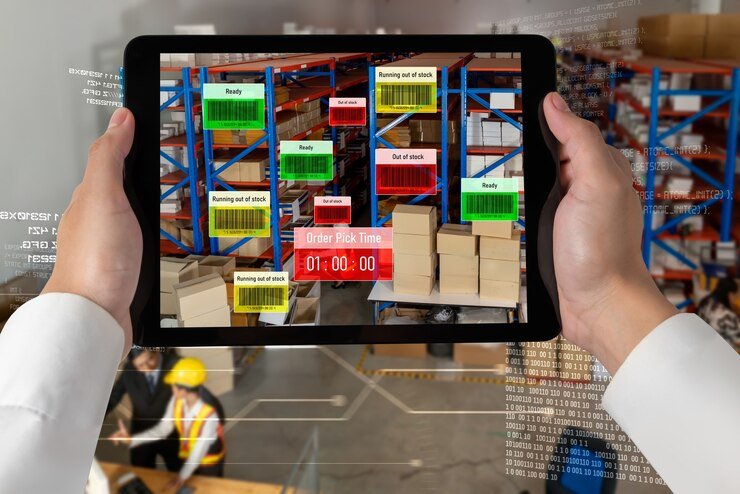The Basics of LTL Freight Shipping
Combining freight shipments from many carriers into a single truckload is known as LTL freight transportation, and it is an economical logistical option. By using this technique, companies may ensure prompt delivery of goods while saving money on transportation. You only pay for the area of the truck that your freight takes up when you share space. For companies whose shipments do not require a full truckload, this approach has shown to be quite beneficial. Businesses trying to enhance their supply chain operations must comprehend the LTL freight shipping procedure. LTL shipping maximizes the effectiveness of each journey by combining many shipments from various providers, lowering the overall carbon footprint and promoting environmental sustainability. Additionally, LTL shipping can provide greater flexibility in scheduling and routing, accommodating a variety of shipping needs. It also allows for more frequent shipments, reducing inventory holding costs and improving cash flow.
Why Choose LTL Freight Shipping?
- Cost Savings:LTL shipping is generally cheaper than Full Truckload (FTL) shipping. It allows small and mid-sized businesses to take advantage of the shared trucking space. By distributing the shipping costs among various shippers, businesses can significantly reduce their logistics expenses and allocate those savings to other operational needs.
- Environmental Benefits:By combining shipments, LTL shipping reduces the number of trucks on the road, thus minimizing carbon emissions. This environmentally friendly approach not only helps businesses contribute to sustainability goals but also aligns with the increasing consumer demand for eco-friendly business practices.
- Flexibility:LTL shipping offers multiple service options, including expedited shipping, liftgate services, and inside pickup/delivery. These options provide businesses with the flexibility to choose the services that best meet their specific needs and timelines without having to compromise on efficiency or delivery speed.
Integrating LTL Shipping into Your Supply Chain
Incorporating LTL shipping into your supply chain is easier than it seems. Start by determining your freight class, which is calculated based on factors like density, storage capability, and transportation handling. Utilizing freight class calculators can assist in this process. These tools help classify your shipments accurately, ensuring you receive fair pricing and avoiding unexpected costs.
Another critical step is to partner with reputable LTL carriers that have a proven track record of reliability and efficiency. Leveraging technology, such as transportation management systems, can also streamline the integration of LTL shipping into your supply chain. These systems provide real-time tracking, route optimization, and automated documentation, all of which contribute to more efficient logistics management.
Challenges and Solutions in LTL Shipping
While LTL shipping offers numerous benefits, it also presents some challenges. For instance, shipments can take longer compared to FTL due to multiple stops. However, you can mitigate these delays by working with reliable carriers and using real-time tracking systems for better visibility. This ensures that businesses can keep their customers informed about delivery timelines, thereby improving customer satisfaction.
Additionally, ensuring that your packages are securely packaged can prevent damage during transits, such as break-bulk shipments. For tips on secure packaging, check out these secure packaging guidelines. High-quality packaging materials and techniques not only safeguard your products but also build customer trust by minimizing the risk of damaged goods upon arrival.
Data and Statistics on LTL Shipping Efficiency
Studies show that LTL shipping can reduce freight costs by up to 25% compared to traditional methods. Moreover, the economic impact of the trucking industry highlights the substantial benefits that LTL provides to smaller businesses in particular. Data indicates that the flexibility and cost-effectiveness of LTL shipping have allowed SMEs to compete more effectively with more giant corporations.
Real-time tracking systems play a crucial role in the efficiency of LTL shipping. They not only increase transparency but also help in proactive decision-making, ensuring timely deliveries. By utilizing real-time data, businesses can predict and address potential delays before they impact the supply chain, leading to a more seamless and efficient operation.
Real-Life Examples
Consider a small business in Illinois that manufactures specialized automotive parts. By switching to LTL shipment options, they were able to cut down their shipping costs by 15% annually. This saving allowed them to reinvest in quality control measures, thereby improving their product output and customer satisfaction. Furthermore, the improved logistics efficiency enabled them to expand their market reach, attracting new customers and boosting their revenue.
Future Trends in LTL Shipping
The future of LTL shipping looks promising, with innovations like autonomous trucks and drone deliveries on the horizon. These advancements aim to increase efficiency and reduce costs even further, making LTL an increasingly attractive option for businesses looking to optimize their supply chain. Autonomous trucks, for example, could operate for longer hours than human-driven vehicles, thus speeding up delivery times and reducing labor costs.
Similarly, drone deliveries have the potential to revolutionize last-mile logistics by offering quicker and more cost-effective solutions. As these technologies continue to evolve, LTL shipping is set to become an even more integral part of modern supply chain strategies, helping businesses stay competitive in a rapidly changing market.
Conclusion
If you’re looking to optimize your supply chain and cut down on shipping costs, LTL freight shipping is worth considering. Evaluate your shipping needs, assess the potential cost savings, and determine if LTL shipping aligns with your business goals. With the proper planning and resource utilization, LTL shipping can provide a significant boost to your supply chain efficiency, supporting your business’s growth and sustainability goals.



